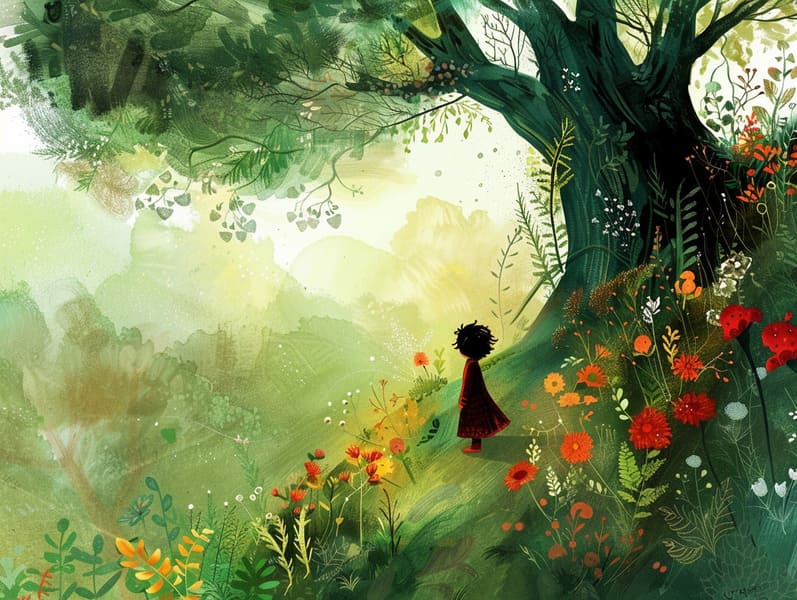The Inception of Timeless Fairy Tales and Their Persistent Charm.
The Inception of Timeless Fairy Tales and Their Persistent Charm.
Blog Article

Grimm's fairy tales have ancient roots. These tales have been shared from one generation to the next centuries before they were ever written down. They came from a variety of traditions, including African traditions. They were initially narrated among adults, often carrying themes and messages mirroring the societal norms and beliefs of the time.
The renowned Brothers Grimm, Jacob and Wilhelm, were among the first to collect and release many of these beloved stories. Their volume, "Grimm's Fables," included narratives like "Cinderella," "The Bread Crumb Trail," and "Snow White," which have since become cornerstones in the world of iconic fairy tales. Similarly, Hans Andersen's delightful tales, such as "The Mermaid's Tale," and "The Ugly Duckling," have enchanted hearts worldwide, establishing their place in the pantheon of treasured fairy tales.
Despite being ancient, these stories remain as significant as ever, especially as nighttime stories for kids. These delightful tales are now available in many formats, including beautifully illustrated books, charming animations, and web-based fairy tales.
Their persistent charm can be attributed to several enchanting factors:
Vital Lessons: Ancient fairy tales often offer important moral lessons. Narratives like "The Boy Who Cried Wolf" teach the importance of sincerity, while "The Race of the Tortoise and the Hare" underline the qualities of determination and meekness. These narratives offer little ones clear distinctions between virtue and vice, molding their moral compass in a mild yet important way.
Warmth and Understanding: Old fairy tales frequently depict heroes facing obstacles and hardships, inspiring children to empathize with their struggles and boost their triumphs. For instance, "Beauty and Her Beast" teaches us the value of looking deeper to see the true character of a character, encouraging awareness and recognition.
Cultural Appreciation: Many traditional fairy tales are interwoven with the cultural contexts from which they came. Discovering these stories can provide fascinating glimpses into different societies, fostering a sense of cultural appreciation and knowledge.
Inventiveness and Imagination: The fantastical elements in fairy tales—supernatural elements—boost children’s fantastical thinking. These tales carry readers to fantasy realms, stimulating innovative thinking and a sense of awe that remains a lifetime.
Timeless fairy tales are not only fascinating but also illuminating. They provide whimsical tools in developing various brain and heart skills in little ones. When classic fairy tales are spoken out loud, website they cultivate language development by showing new words and complicated sentence structures. This practice also improves listening skills and mental focus, as kids keep up with the story, anxious to see what happens next.
Furthermore, reflecting on the themes and characters of fairy tales can cultivate analytical skills and analytical skills. The young are led to identify patterns, forecast, and grasp cause and effect. These analyses also support the young utter their thoughts and feelings, contributing to their emotional intelligence.
In today’s digital era, the prevalence of digital storybooks has made these narratives more acquirable than ever. Internet sites and programs feature huge assortments of Grimm's fairy tales that can be viewed or listened on anytime, anywhere. Fairy tales told out loud are particularly well-liked, presenting an enjoyable way for little ones to be a part of these mesmerizing stories. Narrated books and spoken videos transport characters and settings to life, often augmented by charming melodies and background music that amplify the tale journey.
The timeless appeal of old fairy tales lies in their ability to adapt to contemporary times while retaining their fundamental ideas. Contemporary versions of these narratives often show more multicultural figures and modern settings, making them understandable to today’s audience. However, the central morals of valor, kindheartedness, and lawfulness remain unchanged, continuing to reach kids of all ages.
Traditional fairy tales also offer a sense of assurance and predictability. They highlight a orderly narrative with a apparent beginning, middle, and end, often winding up with the solving of conflicts and the triumph of good over evil. This dependability can be placating for little ones, rendering a sense of security in an ever-changing world.
Classic fairy tales continue to enthrall and inform new generations, maintaining their attraction and importance in modern society. As bedtime stories for kids, they bestow a perfect blend of captivation and insight, enriching moral values, empathy, and creativity. The availability of internet fairy tales and the favor of fairy tales read aloud make sure that these old fairy tales remain obtainable to new generations.
By upholding and narrating these fairy tales, we continue to honor the rich tapestry of inventiveness and cultural heritage. Whether you are browsing a gorgeously illustrated book, enjoying a electronic library, or hearing an sound book, the radiance of classic fairy tales is always within reach. These stories reveal of the unending influence of storytelling and its ability to link us across generations and cultures.
Whether you are seeing a artistically illustrated book, enjoying a online library, or listening on an voice book, the charm of timeless fairy tales is always within reach.
These stories convey of the perpetual strength of fairy tales and its ability to unify us across epochs and places, weaving a spell that enchants and educates alike.